Reinforcement of brickwork: technology and subtleties of the process
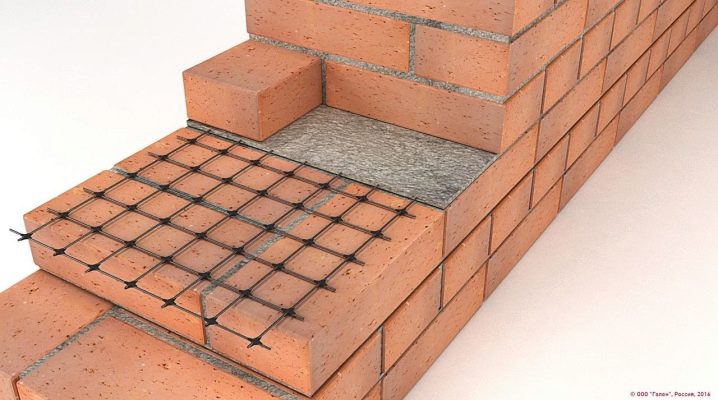
Currently, the reinforcement of brickwork is not mandatory, since the building material is produced using modern technologies, while various components and additives are used that improve the structure of the brick, ensuring a reliable connection between the elements.
The strength of concrete is also increased, which eliminates the need to use mesh for reinforcing rows of bricks. But to ensure improved stability for certain types of structures according to SNiPs, the use of a reinforcing mesh is still recommended.
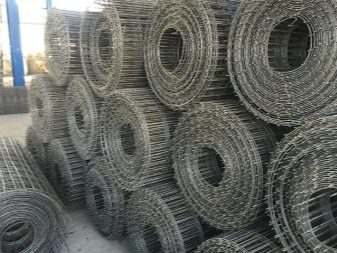
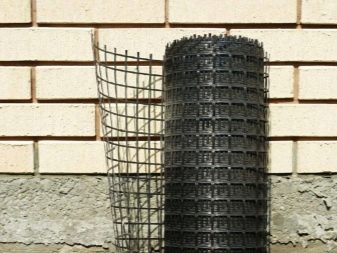
Peculiarities
Before you determine why you need a mesh, you need to consider the different types of this product that are used in the construction of structures. All of them have their own advantages and disadvantages, and therefore you need to know about where the mesh will be best used.
Reinforcement is carried out in order to improve the strength of the entire structure. It also prevents the walls from cracking when the foundation shrinks, which occurs during the first three to four months after the construction of the structure. The use of a reinforcing mesh makes it possible to remove all loads from the masonry, but it is necessary to use only metal or basalt products.

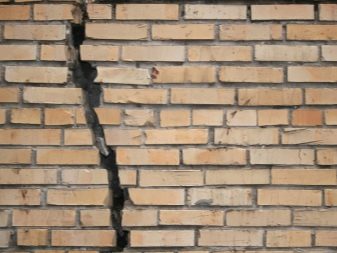
To strengthen the building and eliminate shrinkage, various reinforcement options can be selected, regardless of what material they are made of. Reinforcement mesh helps to build walls with better quality, while it is recommended to lay it at a distance of 5-6 rows of bricks.
Half-brick walls are also finished with reinforcement. To do this, lay the net every 3 rows. In any case, the step of its laying is determined by the strength class of the structure, the mesh itself and the base.
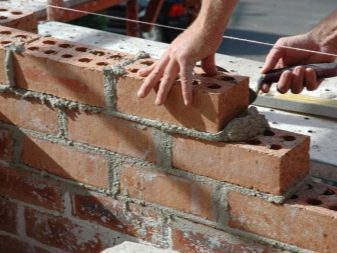
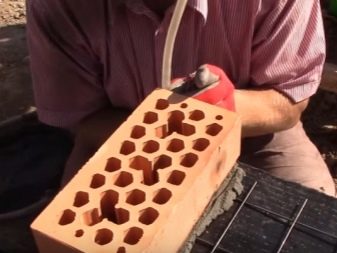
Most often, mesh VR-1 is used to reinforce brick walls. It can also be used for other types of construction work and can be laid on various mortars, including adhesive for ceramic tiles. This mesh has a mesh size ranging from 50 to 100 mm and a wire thickness of 4-5 mm. Cells can be square or rectangular.
The product is durable and resistant to aggressive substances or moisture. It has increased impact strength and can maintain its integrity in the masonry even if the base is partially damaged, which makes it possible to quickly restore it. The mesh does not contribute to the deterioration of the thermal insulation of the masonry and can last up to 100 years. Its installation allows you to reduce the vibration level of the structure, it adheres perfectly to concrete. Sold in rolls for easy transportation.

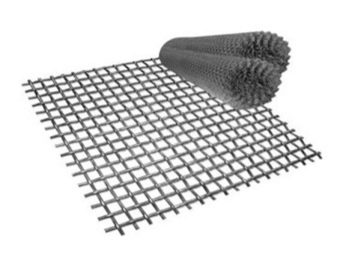
Mesh properties
Depending on the material used, the reinforcing mesh is:
- basalt;
- metal;
- fiberglass.

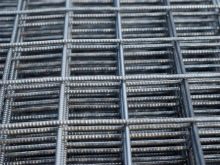
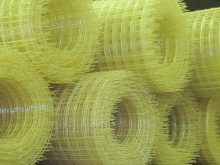
The material of manufacture is selected based on the design features of the structure where the reinforcement will be applied. The last mesh has the lowest strength, and the disadvantage of the first and second is that they can corrode during operation. Wire mesh is often used for vertical reinforcement. It is strong enough, but it can cause some difficulties when laying in the wall, and therefore it is necessary to work with such material very carefully.
Basalt mesh is considered the best option for reinforcing bricks., which is durable and superior in its parameters to metal products.Also, polymer components are added to this mesh during production, which prevents corrosion and increases resistance to harmful factors.

Advantages and disadvantages
All grids that are sold today are produced in accordance with the requirements of SNiPs, and therefore, to ensure their durability, only the norms for laying bricks and walls must be observed. Such a mesh can withstand a significant breaking load, which is an important factor for brick walls. It is also lightweight and can easily fit into walls.
Other advantages include:
- good stretching;
- light weight;
- low cost;
- the convenience of use.
The only downside is that it is necessary to correctly lay the grids, determining their consumption depending on the type of wall and the characteristics of the foundation. Therefore, specialists should work with such materials in order to ensure the maximum effect from construction. If it is illiterate and incorrect to lay the reinforcing material, then this will only increase the cost of the work, but will not bring the expected result and will not increase the strength of the wall.
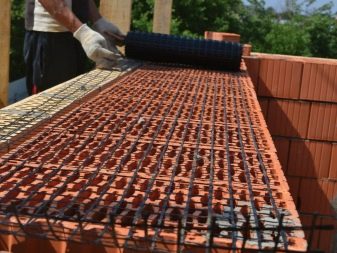
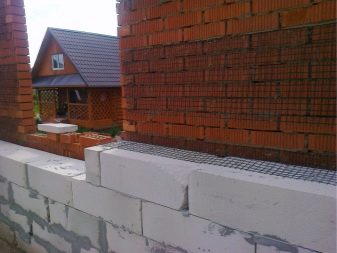
Views
Reinforcement can be performed in the following options.
Transverse
This type of wall reinforcement involves the application of reinforcing elements to the surface of the brick in order to increase its compressive strength. In this case, it is recommended to choose special types of wire mesh with a diameter of 2 to 3 mm. Or, ordinary reinforcement can be used, which is cut into rods (6-8 mm). If necessary, use ordinary steel wire if the height of the wall is not very high.
Transverse reinforcement is usually carried out during the construction of columns or partitions, and all elements of the reinforcing material are installed at a distance, depending on the type of structure. They must be laid through a small number of rows of bricks and at the same time reinforced with concrete on top. So that the steel does not corrode during the period of use, the thickness of the solution should be 1-1.5 cm.

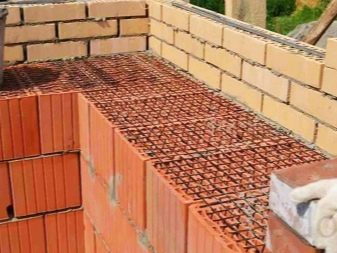
Rod
For this type of surface strengthening, reinforcement is used, which is made of metal rods cut into a length of 50-100 cm. Such reinforcement is laid into the wall after 3-5 rows. This option is used only with ordinary brick laying and the rods are placed at a distance of 60-120 mm from each other in a vertical or horizontal position.
In this case, the reinforcing material must enter the seam between the bricks to a depth of 20 mm. The diameter of the rods is determined based on the thickness of this seam. If it is necessary to strengthen the masonry, then, in addition to the rods, steel strips can be used additionally.
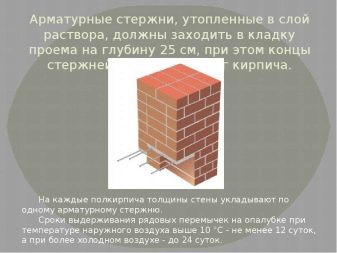
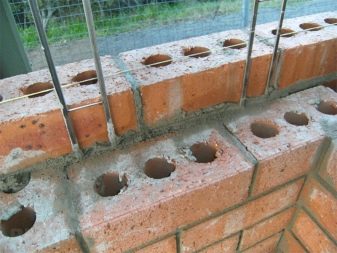
Longitudinal
This type of reinforcement is divided into internal and external, and the elements inside the masonry are located depending on the location of the reinforcing parts. Often, for this type of reinforcement, rods with a diameter of 2-3 mm are also additionally used, they are installed at a distance of 25 cm from each other. You can also use a regular steel angle.
To protect such elements from the influence of negative factors, it is recommended to cover them with a layer of mortar 10-12 mm thick. Installation of reinforcing elements is carried out every 5 rows of bricks or according to a different scheme, depending on the characteristics of the masonry. To prevent displacement and deformation of the rods, they must be additionally fastened to the bricks. If a significant mechanical load on the structure is assumed during its operation, then it is possible to lay the reinforcing components every 2-3 rows.
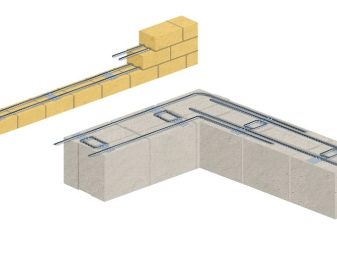
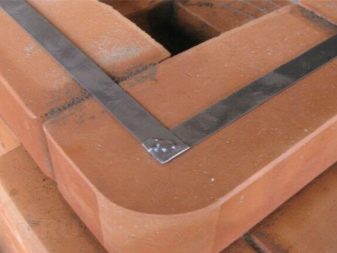
Useful Tips
- For front masonry today, you can use different types of nets and at the same time lay them in different variations, which will help to revet the walls with decorative materials, if necessary. To do this, you can additionally leave a small amount of mesh outside the masonry for the installation of thermal insulation.
- It is imperative to connect the individual elements of the reinforcing mesh to each other in the masonry.
- Experts note that when reinforcing, you can choose any mesh shape with square, rectangular or trapezoidal cells.
- Sometimes the meshes can be made independently by changing the mesh size and wire cross-section.

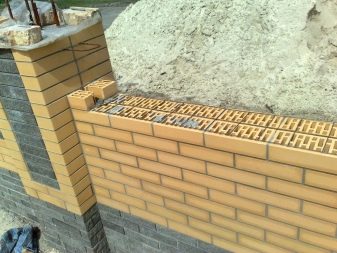
- When installing such a reinforcing element, it is necessary to immerse it very well in the solution so that on both sides it is covered with the composition to a thickness of at least 2 mm.
- Usually the reinforcing element is mounted through 5 rows of bricks, but if it is a non-standard structure, then the reinforcement is done more often, depending on the thickness of the wall.
- All reinforcement work is carried out together, and the material is laid with an overlap. After that, it is fixed with a mortar and bricks are placed on top of it. During work, it should be observed that the material does not move or deform, as the strength of the reinforcement will decrease.
- All products for reinforcement are manufactured in accordance with GOST 23279-85. It regulates not only the quality of these products, but also their strength and the content of polymer fibers in the composition.
- If necessary, the reinforcement can be laid using a cement composition, but this reduces the thermal conductivity of the structure itself and its sound insulation.
- If you need to use a reinforcing mesh when laying decorative bricks, it is recommended to use products of small thickness (up to 1 cm), which can be drowned in a small layer of mortar. This will provide an attractive appearance to the wall and increase the service life of the entire structure, improving its stability with a minimum layer of mortar.
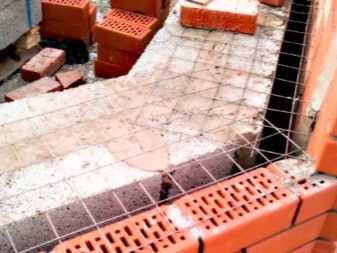
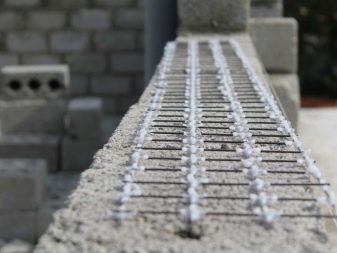
As you can see, despite the fact that the masonry process is rather complicated and requires the participation of specialists, the walls can be reinforced on their own, subject to the necessary rules and regulations. When implementing measures, it must be remembered that the strengthening of structures during the construction of structures also refers to construction work. Therefore, all actions must be carried out taking into account the requirements of SNiP and GOST, which will help to extend the service life of the building, despite the increase in the cost of its construction.
You can learn more about reinforcing masonry in the video.













The comment was sent successfully.